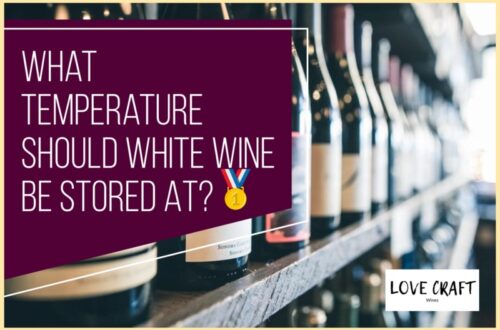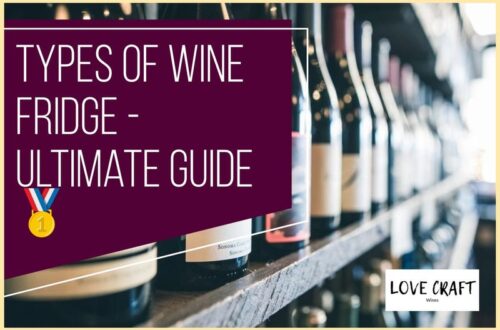You’re at a restaurant, perusing the wine list, and you come across a rich, full-bodied red that catches your eye. You’re trying to watch your calorie intake, but you can’t resist the temptation. You order the wine, savoring every sip, but in the back of your mind, you can’t help wondering: is this wine fattening?
The answer is not a simple yes or no. Wine, like any other alcoholic beverage, contains calories, but the exact amount varies based on several factors.
In this article, we’ll dive into the nutritional value of wine, discuss the factors that affect its calorie content, and provide tips on how to enjoy wine without sabotaging your healthy lifestyle.
So sit back, pour yourself a glass of your favorite vintage, and let’s explore the calorie content of wine together.
Table of Contents
Understanding Wine’s Nutritional Value
You won’t believe how much impact a glass of vino can have on your waistline! Understanding the nutritional value of wine starts with knowing its calorie content and how it affects your metabolism.
On average, a five-ounce glass of wine contains about 120 calories. Although this might not seem like a lot, those calories can easily add up if you’re indulging in more than one glass. Wine’s calorie content comes from its alcohol content, which is metabolized differently than other macronutrients like carbohydrates and proteins.
But it’s not all bad news. Wine also contains antioxidants, which can benefit your health in many ways. Antioxidants are compounds that protect your body’s cells from damage caused by free radicals, which can lead to chronic diseases like cancer and heart disease.
Red wine, in particular, contains a higher concentration of antioxidants, such as resveratrol, which has been linked to improved heart health. So while wine may contain calories, it can also be a source of beneficial nutrients for your body.
As you can see, wine’s calorie content is just one aspect of its nutritional value. Other factors, such as the type of wine, the alcohol content, and the serving size, can all affect how many calories you consume. Understanding these factors can help you make informed choices when it comes to indulging in a glass of vino.
Factors Affecting Wine’s Calorie Content
It’s amazing how much a simple factor like alcohol percentage can affect the impact a glass of fermented grapes has on our waistlines. Wine fermentation is a process that converts the sugar in grapes into alcohol, and the higher the alcohol content, the more calories the wine has.
However, there are other factors that can affect the calorie content of wine, such as residual sugar, acidity, and tannins.
Here are some things to consider when trying to estimate the calorie content of your wine:
- Alcohol percentage: As previously mentioned, higher alcohol content means more calories.
- Residual sugar: Some wines may have residual sugar left over from the fermentation process, which can add additional calories.
- Acidity: Wines with higher acidity may have fewer calories, as the acid can help to slow down the absorption of alcohol and sugar.
- Tannins: Wines with high tannin levels may also have fewer calories, as tannins can help to slow down digestion and absorption.
- Serving size: Of course, the amount of wine you consume also plays a role in the overall calorie count. A standard 5-ounce glass of wine typically contains around 120-130 calories, but larger pours or multiple glasses can quickly add up.
Now that you understand some of the factors that can affect the calorie content of wine, let’s take a look at some specific types of high-calorie wines to watch out for.
High-Calorie Wines to Watch Out For
Be mindful of these high-calorie wines if you want to indulge without worrying about your waistline. Dry wines are generally lower in calorie content compared to sweet wines. This is because sweet wines contain more residual sugar, which contributes to their higher calorie count.
Among red wines, top-calorie contenders include Zinfandel, Shiraz, and Merlot. For white wines, Chardonnay and Viognier are known to be high-calorie options. If you’re watching your calorie intake, it’s best to stick to Pinot Noir or Sauvignon Blanc, which are typically lower in calories.
It’s important to note that the calorie content of wine can vary depending on the vintage, winemaking process, and region. For example, a California Chardonnay may have a higher calorie count compared to a French Chardonnay due to differences in growing conditions and winemaking techniques.
To avoid consuming excess calories, it’s recommended to check the label for the alcohol percentage and serving size. This leads us to the next point of discussion: portion control and moderation.
Portion Control and Moderation
Remember, it’s always a good idea to keep an eye on how much you’re enjoying your drinks and be cautious of overindulging to ensure you’re taking care of your health.
When it comes to wine, portion control is key. Here are some tips to help you stay mindful of your sipping and serving size awareness:
- Use a smaller glass: A large wine glass can make it easy to pour more than you intended. Opt for a smaller glass to help control your portions.
- Measure your pour: Use a measuring cup or pour spout to ensure you’re pouring the appropriate serving size, which is typically 5 ounces.
- Alternate with water: Drinking water in between glasses of wine can help you stay hydrated and also slow down your overall consumption.
By being mindful of your wine intake and taking steps to control your portions, you can still enjoy a glass of wine without worrying about the calorie content.
In the next section, we’ll discuss how to balance wine consumption with a healthy lifestyle.
Balancing Wine Consumption with a Healthy Lifestyle
Maintaining a healthy lifestyle while enjoying your favorite drinks, like wine, can be accomplished by incorporating a balanced diet and exercise routine to counteract any potential indulgences.
One way to balance wine consumption is to opt for wine alternatives, such as low-calorie wine spritzers or wine mixed with sparkling water. These options can help reduce the overall calorie intake while still allowing you to enjoy the taste of wine.
In addition to making smart wine choices, it’s important to incorporate regular exercise routines to help keep your body healthy and balanced. Exercise can help burn off any excess calories and improve overall cardiovascular health.
It’s recommended to aim for at least 150 minutes of moderate exercise or 75 minutes of vigorous exercise per week, in addition to incorporating strength training exercises.
By combining a balanced diet, wine alternatives, and regular exercise, you can enjoy your favorite drinks while still maintaining a healthy lifestyle.
Frequently Asked Questions
Can the type of grape used to make wine affect its calorie content?
Grape variety impact is a crucial factor that affects the calorie content of wine. The type of grape used to make wine plays a significant role in determining the sweetness, acidity, and alcohol content of the wine.
Additionally, the fermentation effects of the grape variety can significantly impact the calorie content of wine. Certain grape varieties, like Muscat, have a higher sugar content, leading to a higher calorie count in the finished wine. On the other hand, grape varieties with lower sugar content, like Sauvignon Blanc, have a lower calorie count.
Therefore, it’s essential to consider the grape variety used when estimating the calorie content of wine.
Does aging wine increase or decrease its calorie content?
When it comes to wine fermentation, the process of aging can have an impact on the caloric density of the wine.
As wine ages, its water content slowly evaporates, resulting in a more concentrated flavor and a higher caloric content per serving. However, this increase in caloric density is usually only minimal, with most wines only experiencing a difference of a few calories per serving.
Additionally, the type of wine and the length of aging can also play a role in the final caloric content.
Overall, while aging wine may slightly increase its calorie count, it’s unlikely to have a significant impact on the overall healthfulness of the beverage.
Is there a significant difference in calorie content between red and white wine?
When comparing the calorie content of red and white wine, it’s important to consider not only the color but also the alcohol content.
On average, red wine tends to have a slightly higher calorie count than white wine due to its higher alcohol percentage.
However, this difference is typically not significant enough to make a major impact on your overall calorie intake.
In fact, the calorie content of wine in general is relatively low compared to other alcoholic beverages and can be enjoyed in moderation as part of a balanced diet.
Can adding ice or water to wine lower its calorie content?
Adding ice or water to wine can certainly lower its calorie content, but the effects of diluting the wine go beyond just its caloric density.
Imagine a sponge soaking up water – that’s what happens when you add water to wine. The wine molecules spread out and become less concentrated. This, in turn, can affect the way your body absorbs the alcohol in the wine.
When you dilute wine with water, the alcohol is absorbed more slowly than it would be if you drank the wine straight. This makes it easier for your liver to process the alcohol and reduces your risk of getting drunk too quickly.
So while adding ice or water to wine may not significantly reduce its calorie content, it can have a positive effect on alcohol absorption.
How do wine cocktails compare in terms of calorie content to traditional wine?
Looking for low calorie wine options? Consider wine cocktail alternatives! These drinks can be a great way to enjoy the flavors of wine while keeping your calorie count in check.
Some popular options include spritzers, which mix wine with soda water or sparkling water, or wine-based cocktails that incorporate fresh fruit and herbs.
Keep in mind that the calorie count of these drinks will vary depending on the specific recipe and ingredients used, so it’s always a good idea to check the nutrition information before ordering or making your own.
With a little creativity and experimentation, you can enjoy the taste of wine without the guilt of excess calories.
Conclusion
Congratulations, you’ve successfully learned about the calorie content of wine and its potential impact on your weight. By now, you understand that wine isn’t necessarily fattening if consumed in moderation and balanced with a healthy lifestyle.
However, it’s important to be mindful of the factors that affect a wine’s calorie content such as its sugar and alcohol levels. Remember to watch out for high-calorie wines such as sweet dessert wines and fortified wines like port.
To maintain a healthy weight, it’s essential to practice portion control and moderation when it comes to wine consumption. And don’t forget to balance your wine indulgences with regular exercise and a healthy diet.
With these tips in mind, you can enjoy your favorite glass of wine without sacrificing your health and wellness.





